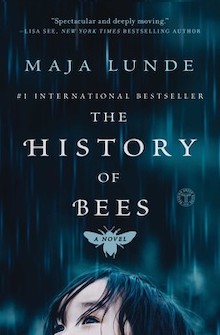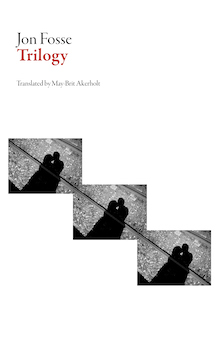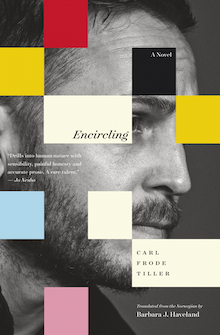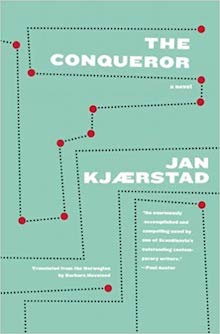Embrace the Chaos
So, for the first time in, probably ever, when I didn’t have an idea for this week’s post, I didn’t steal one of Sam Miller’s ideas from the Effectively Wild podcast. Instead, in a real reversal, I went back to the podcasts I recorded last week and came up with two completely unrelated concepts that I’m going to jam together and see what happens: alternative forms of shelving to encourage serendipitous book discovery and assigning all products a dice-roll of 1 to 6.
Let’s do this!
For anyone who doesn’t listen to the Three Percent Podcast (“too much baseball!” “too grumpy!” “Chad speaks too fast and his voice is metal rake on cement irritating!”), you might have missed my appeal to Tom to reorder Riffraff’s bookshelves in a way that isn’t alphabetical by author last name-author first name-title. I hadn’t really thought about this in detail before, but although it’s a logical system—especially for trying to find something quickly—it’s pretty lame. There’s no connective tissue between books shelved next to one another (Ann Quin and Anna Quinlen are very different), and it’s actually pretty counter-intuitive if you’re just browsing.
That’s why display tables exist! These are books that you can group according to a particular theme or event and that, due to the fact that the books are all faced out and arranged in a more or less random order (usually based on color, with similarly shaded red books as far apart as possible) forces the customer to peruse. To slow down and see what’s there.
Every bookseller will tell you that the books on display tend to sell better than the books that are shelved, spine-out, in the given sections. Which, on initial read, feels like some insight into bookselling, but probably doesn’t really mean all the much in the end, since stores will display books that they have the most copies of, and they’ll have the most copies of the books that are most likely to sell, and by putting them on display, they’ll sell that much quicker, and this is all very circular and uninteresting.
But it makes me curious . . . What would happen if you applied the sort of non-alpha logic of display tables to the sections themselves? By stymieing (which should definitely not be spelled like that) the inclination to straight to a spot to try and find a specific book, we could encourage impulse buys, simply by exposing people to books they otherwise would pass right over.
Two quick rationalizing examples, then onward to the fun stuff:
1.) Libraries! Yes, the Dewey Decimal system is rational and follows a very rigid structure, but it’s also a bit batshit when you think about it. Literatures split up by country of origin and time period? Everything’s arranged by a code that you can learn but never really intuit. There’s no way to just go find Shirley Jackson’s books in the library because they’re not under “J” but under PS3519 .J14b. Gibberish!
And yet, I can’t tell you how many times I’ve read/heard someone talk about how they discovered their favorite author just perusing the stacks in a university library. Forced out of our normal set of expectations of how things are organized, we’re more open to options, to looking at things that we would otherwise never even notice. The brain is weird.
2.) The Amazon Experience. I’m not trying to stir the pot, but given that more than 50% of all book purchases are done online, there might be some reason to think about how things are structured in this space versus a traditional indie bookstore. Meaning: I’m not even sure that it’s possible to browse a section of Amazon alphabetically. And even if you could? NIGHTMARE.
It’s not just that Amazon leverages the customer data it captures to ensure that every browser is presented with the titles they’re most likely to purchase given past purchases, location, current trends, the last five books they’ve viewed, etc., etc. Think about how you use the Internet—it’s always bouncing from one thing to the next. Clicking on a particular YouTube video because the title caught your eye. We have never progressed through the Internet in a systematic, A-to-Z way, but rather in a series of hyperlinks and associative jumps. And our brains are different now because of it. Is there a way that indie bookstores can acknowledge this shift in how we process information and capitalize on it?
One last bonus note: You don’t have to get too deep into behavioral economics to realize that we tend to make the same choices over and over and over. Some people get the same one or three things at their favorite restaurant because they know those dishes are good. Others only buy strawberry jam. Some decide to do something different every single chance they get—which is also a sort of rigid choice that’s being imposed. These ruts (aka “decision-making schemas”) are very useful in everyday life. Who needs to waste 10 minutes of mental energy trying to figure out which coffee shop to go to that morning. To steal an Anthony joke: Jessica Jones would be a better drunk if she always drank Heaven Hill.
But we shouldn’t live like that. When it comes to culture at least. You can’t learn if you don’t explore and read/watch/listen to certain things that are way outside of your comfort zone. And simply by changing up the way you have to browse a section of books—that’ll do it. 100%.
Alternative Form of Shelving #1: By Time Period
I initially thought of this as a way of organizing just the History section, but really, why not the whole damn store? Let’s make this shit chronological. Fiction and nonfiction about the Medieval Period is one spot, the World War I books somewhere else, everything Trump-adjacent on the far left . . .
I’ve been reading a lot of books from twentieth-century Spanish authors. And I would love to be able to browse a shelf that mixed together the fiction I’ve been reading (like Sara Mesa’s amazing Four by Four) with works of contemporary history and philosophy about contemporary Spain. If I saw Jesús Carrasco’s Out in the Open next to a Lara Moreno novel next to a book about the depopulation or rural Spain? I’d buy all three. But not if I had to go to three different parts of the store.
*
Idea #2!
OK, so far, all that above is semi-logical and coherent. But this wouldn’t be a Three Percent post if there weren’t some added layer that doesn’t really actually totally fit, but maybe resonates. So let’s talk about trilogies and quartets from Norway.
When I first plotted out Norwegian Month, I wrote down 15 different titles that I wanted to read in July and write about. I read fast, but not that fast, so that didn’t actually happen. But one reason that there were sooooo many titles on this list is because Norwegians tend to write a lot of series. For the final post of the month, I want to plug at least a handful of them . . .
And, because, as you may have heard on the Two Month Review with Marius Hjeldnes or on tomorrow’s bonus podcast with Annette Orre, Norway has this “thing” of rating all products on a scale of one to six, illustrated with a three-dimensional picture of a die as if the rating were based on chance?, I decided that I would roll dice for all of these series and write about them through the lens of whatever the virtual dice rolled. (This is not Tarot but it feels a bit like Tarot.)
Maja Lunde’s Climate Quartet (Dice Rolls Of: 1, 6, 3, 3)
 WOAH. So I’ve been reading the first book in this series, The History of Bees (translated by Diane Oatley), all weekend, and IT IS NOT A 1. Then again, it’s not a 6. Anything involving the collapse of bee colonies is 100% up my alley, and a speculative book set in three time periods (1850s, 2007, 2090s) doubly so. The only problem I have with this is that, unlike a David Mitchell version of this book, the individual chapters rarely end in cliffhangers. I wish this were more commercial? (WORDS YOU NEVER THOUGHT I WOULD TYPE.) It’s interesting, but I’m not sure what my motivation if to keep reading. I’m only 150 pages in though, so maybe acts II and III really bring the shit home.
WOAH. So I’ve been reading the first book in this series, The History of Bees (translated by Diane Oatley), all weekend, and IT IS NOT A 1. Then again, it’s not a 6. Anything involving the collapse of bee colonies is 100% up my alley, and a speculative book set in three time periods (1850s, 2007, 2090s) doubly so. The only problem I have with this is that, unlike a David Mitchell version of this book, the individual chapters rarely end in cliffhangers. I wish this were more commercial? (WORDS YOU NEVER THOUGHT I WOULD TYPE.) It’s interesting, but I’m not sure what my motivation if to keep reading. I’m only 150 pages in though, so maybe acts II and III really bring the shit home.
But the idea of having to pollinate all flowers by hand because there are no more bees? FUCKING TERRIFYING.
The second book in this series is The End of the Ocean. It’s coming out from HarperVia in January. It’s about a worldwide drought and yesterday I rode my bike past the beach I used to go to here in Rochester and it’s completely been erased from existence due to rising lake levels. This world. Every day the news gets worse. SIX DICE!
The final two books haven’t been written, so 3s sound about right.
Alternative Form of Shelving #2: By Country (The Idlewild Model)
I hesitate to even include this here because it exists in the real world, and that’s not fun. But Idlewild in NYC organizes their books by country—not by authors from that country, but any book about that country. Going on a trip to France? One shelf has all the fiction, travel guides, historical books, and memoirs by Americans about Paris, Marseille, Ligue 1, etc.
Even though I instituted this at Quail Ridge Books for our translated titles—and upped the sales of those books by two-three fold—I’m not sure it makes sense. Boundaries are artificial, yo. I never got good at Spanish because I never wanted to read only Spanish books. We’re all very cosmopolitan. If I took these “Month of X Literature” posts more seriously, I think I’d hate myself. Books travel. That’s the point. And they can be contextualized in a million different ways, with “country of origin” or “language” being one of the easiest and possibly most reductive.
Trilogy by Jon Fosse, translated by May-Brit Akerholt (Die Roll: 4)
 Not actually a trilogy! At least not in terms of volumes. (Although it is three novellas in one book.) Which is why it got one score: a 4. Which is . . . good? This is exactly where the 1-6 scale falls apart. A 3 is probably bad, but is a 4 that much better? Brains love extremes, so these middling numbers just get lost.
Not actually a trilogy! At least not in terms of volumes. (Although it is three novellas in one book.) Which is why it got one score: a 4. Which is . . . good? This is exactly where the 1-6 scale falls apart. A 3 is probably bad, but is a 4 that much better? Brains love extremes, so these middling numbers just get lost.
There is a new septology forthcoming from Fosse. It’s coming out from Fitzcarraldo (and maybe Transit?) in three volumes starting next year. I read the first one. I would publish this. (But made no offer because I can’t bring myself to outbid a friend, even though I’ve yet to reap the karma from this sort of collaborators-not-competitors approach *cough* NewDirectionsMathiasEnard *cough.*) But it’s also insanely slow and atmospheric and for a very particular Twitter crowd. It’s a 4! Out of 6!
Alternative Form of Shelving #3: Associative
This would be wild, but what if you took all the books in your store and, much like readers do in their private libraries, lined them up in a totally idiosyncratic way based on which books remind you of one another, either because of content, or when you read them, or where you read them, or whatever ideas there are connecting one book to another. Go crazy.
I have no idea what this bookstore would look like, or what it would be like to shop, but I feel like I’d stay there for a very long time, trying to figure out the psychology of the buyer. And that could be fun!
There’s a larger, unstated concept behind this entire rubric that I want to try and articulate once again: When you force readers out of the comfort zone of buying and reading the most popular, most obvious books, they will experience a greater joy in reading. That’s my hypothesis.
Sidenote: I don’t look through music in alphabetical order. Not at all. Spotify gives me recommendations that are based on my recent listening habits, recent releases, other forms of sequencing . . . It’s never A-to-Z.
Encircling Trilogy by Carl Frode Tiller, translated by Barbara Haveland (The Dice Say: 2, 4)
 Somehow, that tracks.
Somehow, that tracks.
I haven’t read the published versions of these books, although I did read a lot of pages from volume one translated by a translator who didn’t end up translating the book for final publication. And it was fine. A 2, 3, 4 . . . whatever.
David has lost his memory. When he places a newspaper ad to ask his friends and family to share their memories of him, three respond: Jon, his closest friend; Silje, his teenage girlfriend; and Arvid, his estranged stepfather. Their letters reveal David’s early life in the small town of Namsos, full of teenage rebellion, the uncertainties of first love, and intense experiments in art and music.
This sounds like a Nabokovian puzzle, but reads more like a Franzen novel. So it’s betwixt and between for me. I want something that’s either more pulp, or more brilliant—it’s 2019, we live in the extremes. Being middling is worse than death.
Alternative Form of Shelving #4: If X, then Y
The most Amazon form of shelving, and yet, maybe the most effective? If you like Virginie Despentes’s Pretty Things You’ll Like Kathy Acker’s Empire of the Senseless. YEP.
And whatever crazy shit Tom was saying on the podcast about Amazon physical stores organizing books by rankings (definitely not true), I think they mostly operate off the principle of “If X, then Y” with books all faced out and not alphabetical at all.
What if a physical space reflected the decision-making process of a digital one? Everything is a display, a distraction. Let’s use every trick to get people to buy things they otherwise might not: pricing + discount, anchoring, recency bias. No one else is doing this, and we can quickly gain information about how people shop in ways that no indie store is actually tracking . . .
Even if I disagree with a particular store’s choices of Y for X, I think I would love this. What else is like Shirley Jackson’s The Sundial? Give me that book now!
Jan Kjærstad’s Wergeland Trilogy, translated by Barbara Haveland (Dice: 3, 6, 3)
 Not to repeat the same joke, but: I’ll buy it!
Not to repeat the same joke, but: I’ll buy it!
The last two books in this series—The Conqueror and The Discoverer—were published by Open Letter. My ranking of the trilogy?: Conqueror, Seducer, Discoverer. I agree with the dice!
(Also: I put myself on a 2,500 word limit for this post. I have 79 words left.)
Alternative Form of Shelving #4: Emergent Shelving
Let’s accept for a second that when you do inventory—once or twice a year—by scanning in every book that’s on the shelves. Let’s accept, for a second second that about 5% of your overall revenue as a bookseller comes from people calling you and having you set aside a particular title. Given that, it’s quite possible that how you shelve your books is totally cost-neutral. In other words, you lose a few sales, you gain a few impulse buys.
Especially if you encourage customers to reshelve books in whatever way that they feel. Create a community space where the customer isn’t just “invested,” but is literally part of the experience. I really wonder what would happen if you encouraged your clientele to rearrange books in whatever way they wanted. Let them build the displays! It would be sheer chaos, but it might also be beautiful . . . And if a store is supposed to serve its community, what better way to figure out what people actually want than to let them just take over?
(Disclaimer: None of these ideas will ever be enacted, but if they were! We could learn so much about people’s book shopping habits by trying things like this out. Instead, by sticking to the alphabetical model, we ensure that some books sell more than others simply because of where they end up on the shelf—at eye level, at the end of a row, etc. Rather than try and compete with B&N or Amazon on price or selection, some adventurous stores should try and compete by creating a space that defies “normal” organization and creates something that’s more than simply a shop, something that’s a browsing experience.)

There was a used bookstore in Durham, NC that did exactly that. It was fun to browse that way!